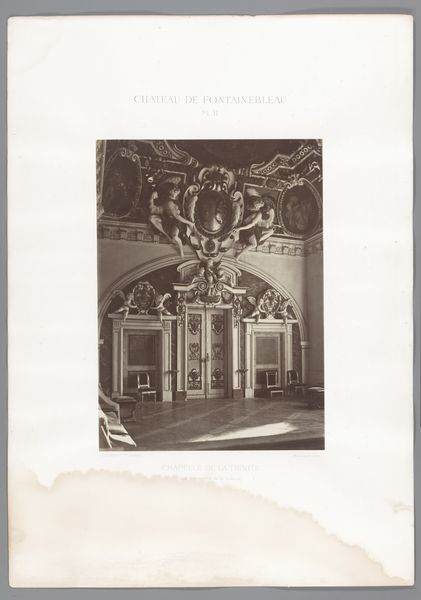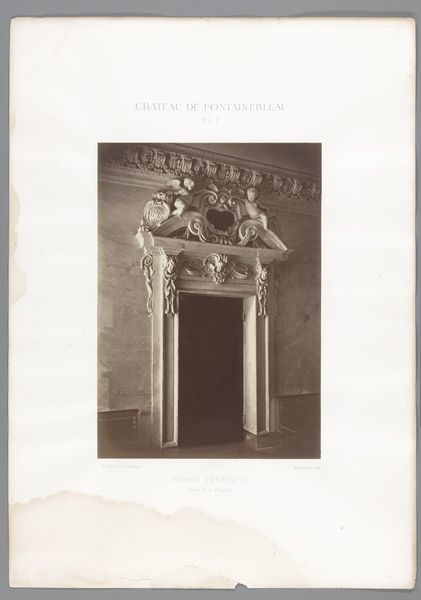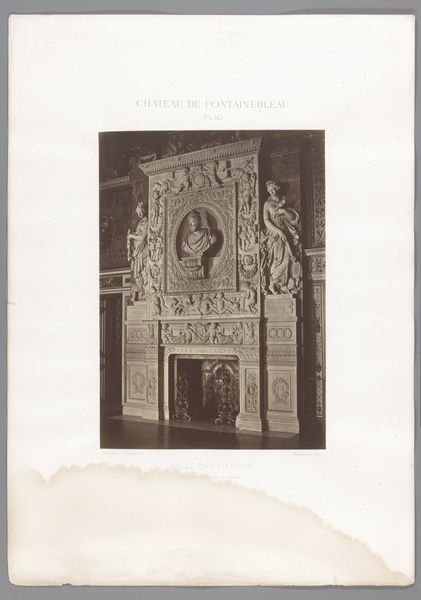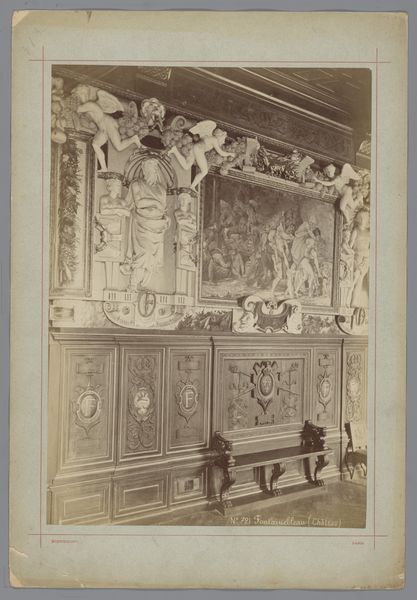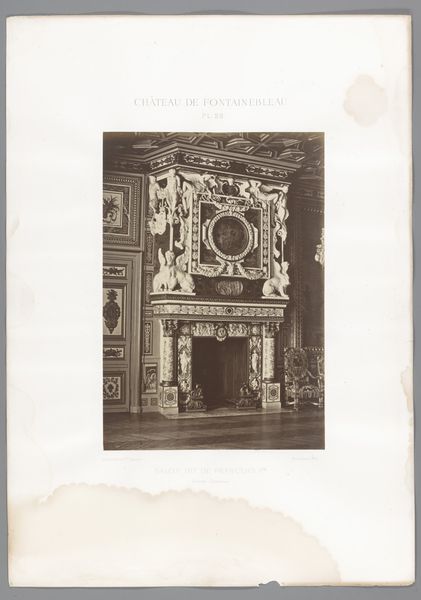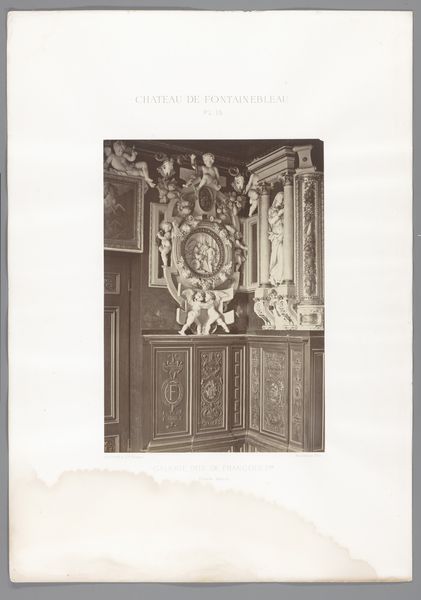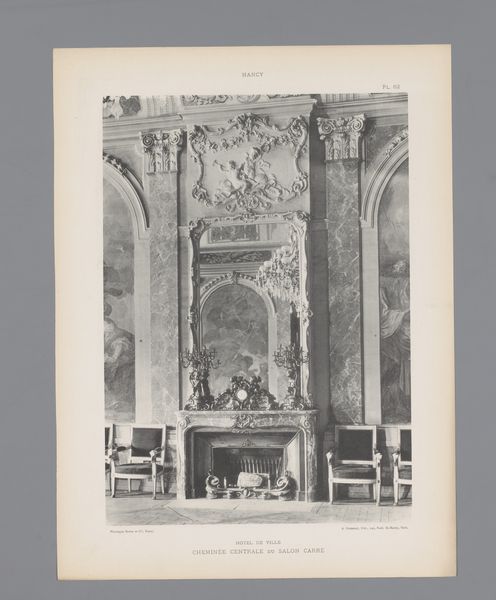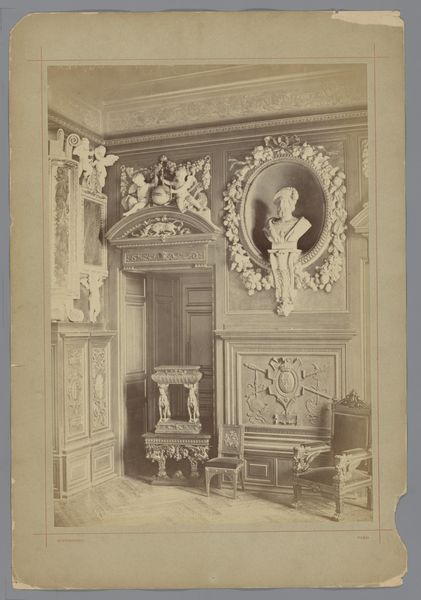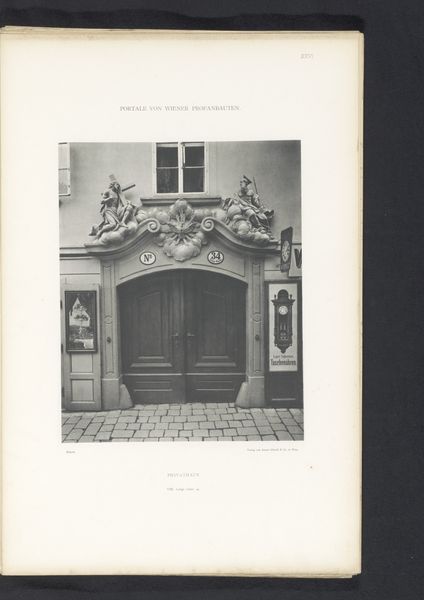
Gezicht op een muur met decoraties in de Galerie François Ier van het Kasteel van Fontainebleau, Frankrijk before 1875
0:00
0:00
print, photography, gelatin-silver-print, architecture
#
neoclassicism
# print
#
landscape
#
11_renaissance
#
photography
#
classicism
#
gelatin-silver-print
#
history-painting
#
architecture
Dimensions: height 353 mm, width 250 mm
Copyright: Rijks Museum: Open Domain
Curator: Here we have a photograph by Médéric Mieusement, taken before 1875, titled "View of a Wall with Decorations in the Galerie François Ier of the Château de Fontainebleau, France." Editor: Wow, instantly, it feels so formal and grand, yet also surprisingly…static. Almost like a stage set waiting for the actors to arrive. There's an overwhelming sense of controlled opulence, you know? Curator: Precisely! Mieusement's photograph provides invaluable documentation. Consider the political implications of capturing such a significant royal space. He's not just documenting architecture; he's preserving an image of power and legacy at a time when those things were very unstable in France. Editor: I love how the light kind of pools in the foreground, drawing you in. The high-contrast is really effective. And I'm intrigued by the roundel on the wall...what story is unfolding within that painted frame? It's sensual, but then you’re snapped back into reality with those slightly awkwardly placed chairs in the foreground! Curator: The roundel, and all the surrounding ornamentation for that matter, are deliberately evocative. The Galerie François Ier was one of the first great decorative schemes of the French Renaissance. Its purpose was to advertise the king's sophistication, wealth, and good taste by referencing classical and mythological themes. The photograph lets us see the design as a carefully constructed symbol of royal authority. Editor: Thinking about it more, I'm almost getting a whiff of melancholia here too. It is maybe because it’s just a photo and not real life... Or is it the weight of all that history, all those figures looking down from the walls. Knowing all that history makes the scene very heavy, doesn’t it? Curator: Indeed, Mieusement's work serves as both record and interpretation. He chooses a particular angle, a specific lighting condition, inviting viewers, even us today, to reflect on how such spaces shaped not just aesthetics, but also political ideologies. It really prompts us to consider the layers of meaning within what might seem like a simple photograph of a room. Editor: And I am so interested to look deeper... to unravel the narratives that lie hidden behind its stoic façade and opulent decorations. It is incredible how an image can hold both profound stillness and an invitation for restless pondering, all at the same time.
Comments
No comments
Be the first to comment and join the conversation on the ultimate creative platform.
